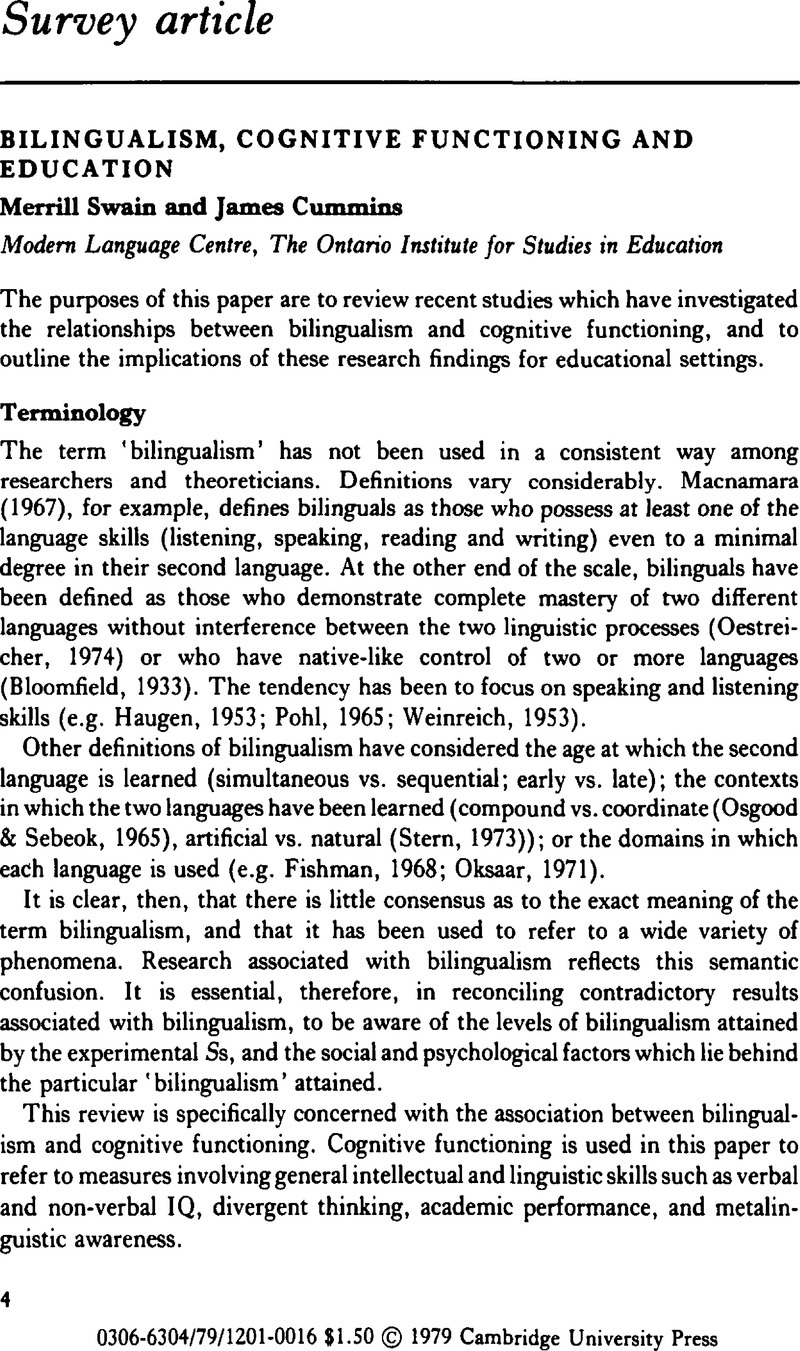Crossref Citations
This article has been cited by the following publications. This list is generated based on data provided by Crossref.
Tosi, Arturo
1979.
Mother-Tongue Teaching for the Children of Migrants.
Language Teaching,
Vol. 12,
Issue. 3-4,
p.
213.
Treffgarne, Carew
1981.
The World Bank on Language and Education: a lot more could be done.
Comparative Education,
Vol. 17,
Issue. 2,
p.
163.
Swain, Merrill
1981.
TIME AND TIMING IN BILINGUAL EDUCATION.
Language Learning,
Vol. 31,
Issue. 1,
p.
1.
Hamers, Josiane F.
and
Blanc, Michel
1982.
Towards a Social-Psychological Model of Bilingual Development.
Journal of Language and Social Psychology,
Vol. 1,
Issue. 1,
p.
29.
Houwer, Annick De
1982.
Second Language Acquisition a Survey of Recent Literature.
ITL - International Journal of Applied Linguistics,
Vol. 55,
Issue. ,
p.
39.
Dawe, Lloyd
1983.
Bilingualism and mathematical reasoning in English as a second language.
Educational Studies in Mathematics,
Vol. 14,
Issue. 4,
p.
325.
PAULSTON, C.B.
1983.
Multicultural and Multilingual Education in Immigrant Countries.
p.
115.
Tosi, Arturo
1986.
Home and community language teaching for bilingual learners: issues in planning and instruction.
Language Teaching,
Vol. 19,
Issue. 1,
p.
2.
Miller, Ann
1986.
Bilingualism and Education.
Oxford Review of Education,
Vol. 12,
Issue. 3,
p.
283.
Verhoeven, Ludo Th.
and
Boeschoten, Hendrik E.
1986.
First language acquisition in a second language submersion environment.
Applied Psycholinguistics,
Vol. 7,
Issue. 3,
p.
241.
Parekh, Bhikhu
1986.
Bilingualism and educational investment.
New Community,
Vol. 13,
Issue. 2,
p.
185.
Harley, Birgit
Hart, Douglas
and
Lapkin, Sharon
1986.
The effects of early bilingual schooling on first language skills.
Applied Psycholinguistics,
Vol. 7,
Issue. 4,
p.
295.
1987.
Ethnic Minority Children Acquiring Literacy.
p.
289.
Tosi, Arturo
1989.
Bilingual Education.
Annual Review of Applied Linguistics,
Vol. 10,
Issue. ,
p.
103.
Tosi, Arturo
1989.
Neither a deficit nor an asset: Children's bilingualism in education.
Journal of Ethnic and Migration Studies,
Vol. 15,
Issue. 4,
p.
617.
Commins, Nancy L.
and
Miramontes, Ofelia B.
1989.
Perceived and Actual Linguistic Competence: A Descriptive Study of Four Low-Achieving Hispanic Bilingual Students.
American Educational Research Journal,
Vol. 26,
Issue. 4,
p.
443.
Tosi, Arturo
1991.
High-Status and Low-Status Bilingualism in Europe.
Journal of Education,
Vol. 173,
Issue. 2,
p.
21.
Rollnick, Marissa
and
Rutherford, Margaret
1993.
The use of a conceptual change model and mixed language strategy for remediating misconceptions on air pressure.
International Journal of Science Education,
Vol. 15,
Issue. 4,
p.
363.
James, Deborah G. H.
1995.
The Assessment and Management of Children from a Non-English Speaking Background who Have Language Problems.
Australian Journal of Human Communication Disorders,
Vol. 23,
Issue. 1,
p.
72.
Rollnick, Marissa
and
Rutherford, Margaret
1996.
The use of mother tongue and English in the learning and expression of science concepts: a classroom‐based study.
International Journal of Science Education,
Vol. 18,
Issue. 1,
p.
91.





